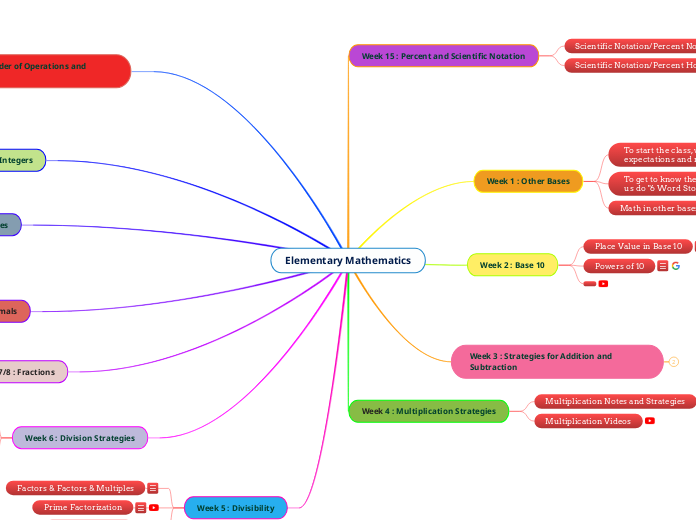Elementary Mathematics
Week 15 : Percent and Scientific Notation
Scientific Notation/Percent Notes
Scientific Notation/Percent Homework
Week 1 : Other Bases
To start the class, we went over classroom expectations and resources
To get to know the class, Professor Sage had us do "6 Word Stories"
Math in other bases
Week 2 : Base 10
Place Value in Base 10
Powers of 10
Week 3 : Strategies for Addition and Subtraction
Week 4 : Multiplication Strategies
Multiplication Notes and Strategies
Multiplication Videos
Week 13/14 : Order of Operations and Exponents
Exponents
Order of Operations
Week 12 : Integers
Adding/Subtracting Integers
Multiplying/Dividing Integers
Week 11 : Properties
Properties of Multiplication and Addition
Multiplication Properties
Week 9/10 : Decimals
Adding & Subtracting Decimals
Multiplying & Dividing Decimals
Week 7/8 : Fractions
Fraction Skills
Adding Fractions
Subtracting Fractions
Week 6 : Division Strategies
Division Pt. 1 : Division Strategies
Division Pt. 2 : Partial Quotients
Division Practice Homework
Week 5 : Divisibility
Factors & Factors & Multiples
Prime Factorization
Divisibility Rules
